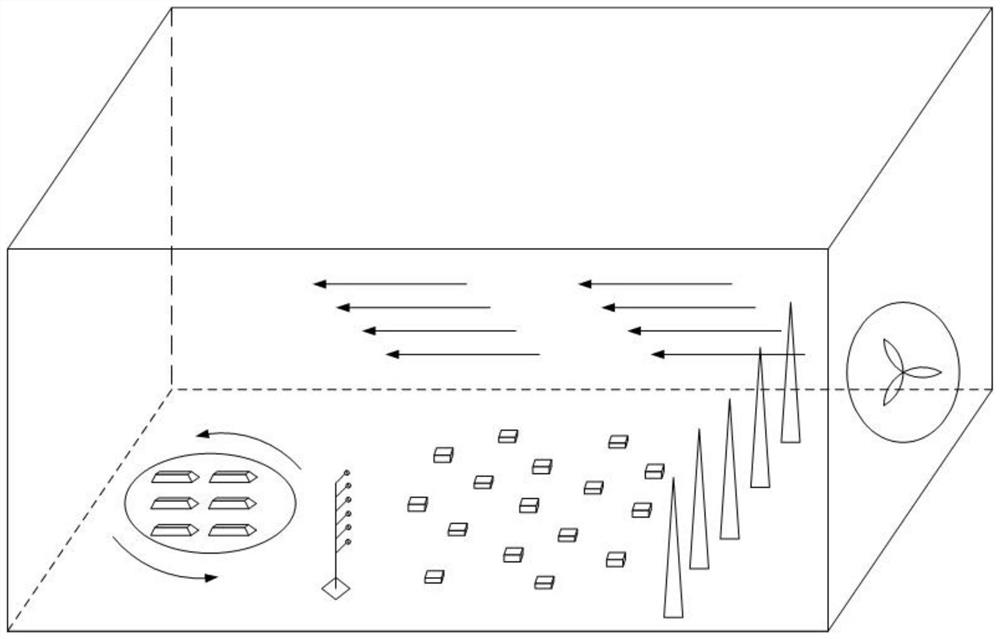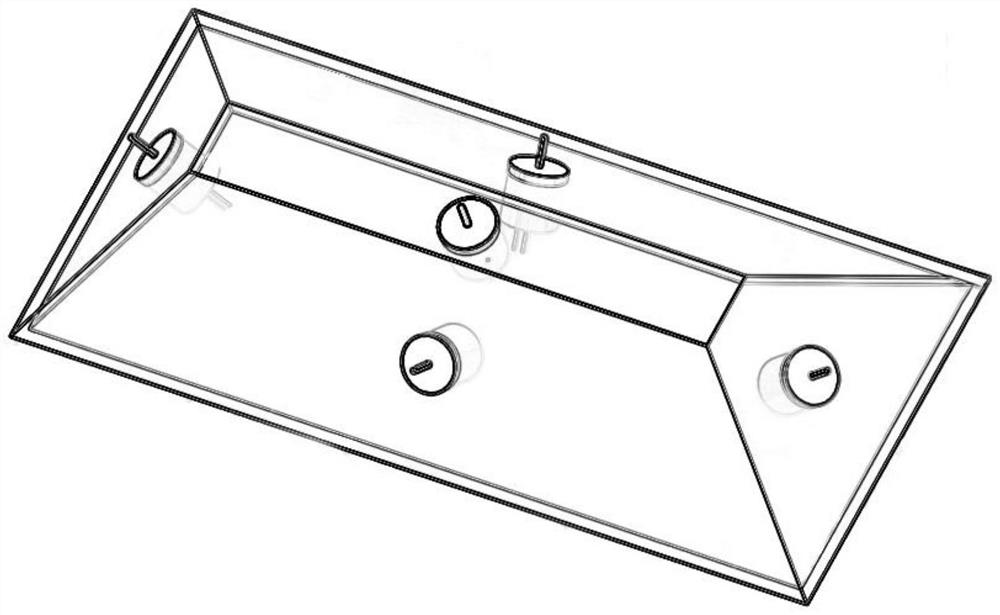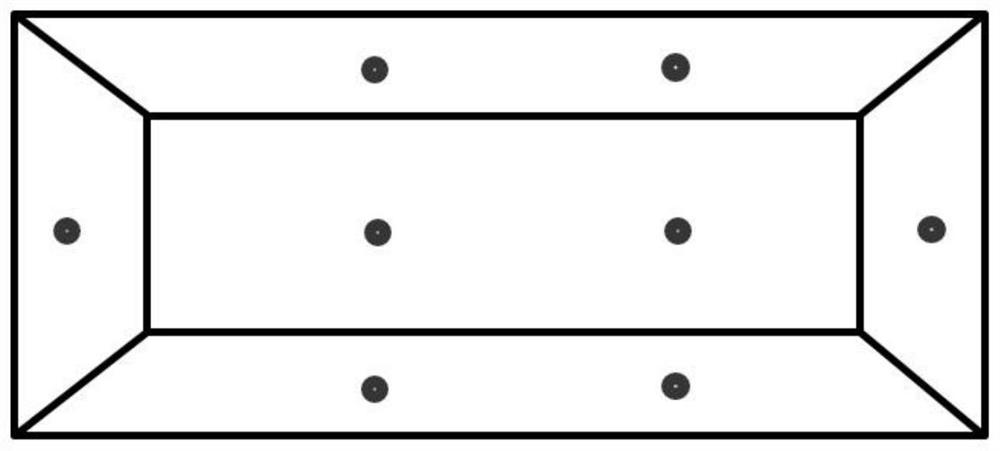Wind tunnel test system and method for stack surface wind speed measurement
A wind tunnel test and stacking technology, which is applied in the field of wind tunnel test system for wind speed measurement on the stacking surface, can solve the problems affecting the accuracy of dust emission, troubles, and inconsistent wind speed values
- Summary
- Abstract
- Description
- Claims
- Application Information
AI Technical Summary
Problems solved by technology
Method used
Image
Examples
Embodiment 1
[0037] like figure 1 As shown, this embodiment provides a wind tunnel test system for measuring the wind speed of the stack surface, including: a stack model to be tested, and a wind flow field system;
[0038] The stack model to be tested is used to obtain the surface wind speed based on the probe;
[0039] The wind flow field system is used to simulate the natural wind, and test the stack model to be tested based on the natural wind to obtain the surface wind speed of the stack model to be tested.
[0040] The shape of the stacking model to be tested is a trapezoid body, and probes are installed on each surface of the trapezoid body, and the probes are used to measure the wind speed.
[0041] Install a probe every 10cm on the three faces along the long side of the trapezoid. If the length of the long side is less than or equal to 10cm, install only one probe on each face.
[0042] The wind flow field system includes a tunnel body, a fan, a wind profile adjustment module an...
Embodiment 2
[0060] According to the content in the first embodiment, the second embodiment specifically discloses:
[0061](1) Simulation of wind load in wind tunnel
[0062] In the atmospheric boundary layer, the wind speed increases with the increase of the height above the ground. When the pressure field is constant with the height, the law of the increase of the wind speed with the height mainly depends on the ground roughness and the vertical temperature gradient. The wind tunnel test for the wind speed measurement of the stack surface is carried out in a simulated atmospheric boundary layer turbulent wind field. The type of the simulated wind field is determined according to the topography and landforms within 2 kilometers upstream of the simulated area. In "Code for Loading of Building Structures" GB50009-2012, landforms (or surface roughness) are divided into four categories:
[0063] Category A refers to the offshore sea surface and islands, coasts and desert areas, the gradient...
PUM
 Login to View More
Login to View More Abstract
Description
Claims
Application Information
 Login to View More
Login to View More - R&D Engineer
- R&D Manager
- IP Professional
- Industry Leading Data Capabilities
- Powerful AI technology
- Patent DNA Extraction
Browse by: Latest US Patents, China's latest patents, Technical Efficacy Thesaurus, Application Domain, Technology Topic, Popular Technical Reports.
© 2024 PatSnap. All rights reserved.Legal|Privacy policy|Modern Slavery Act Transparency Statement|Sitemap|About US| Contact US: help@patsnap.com










